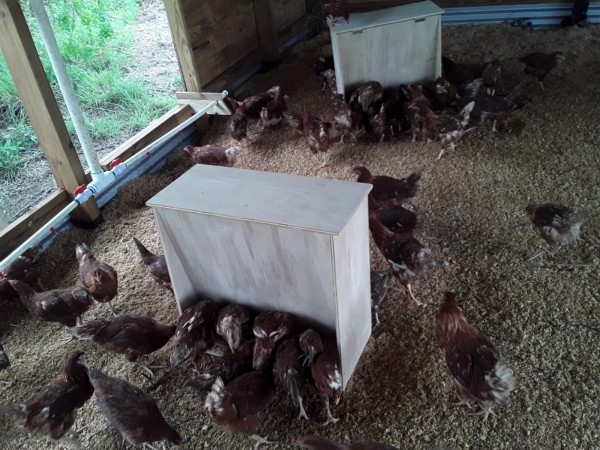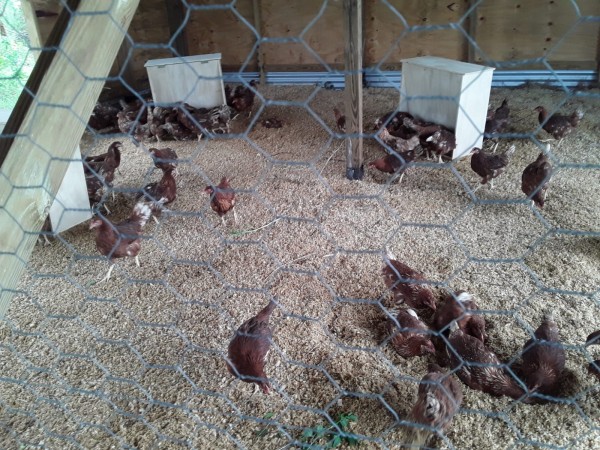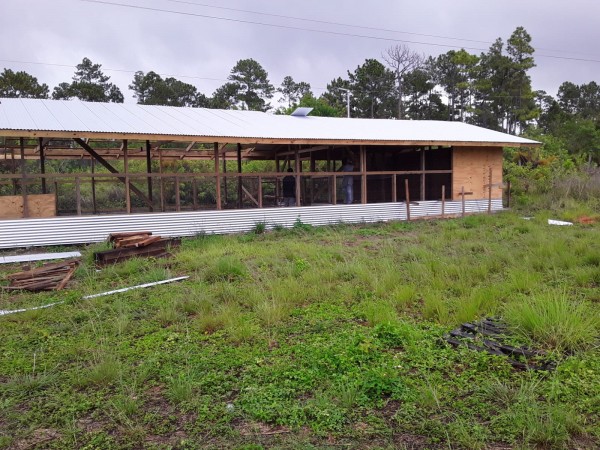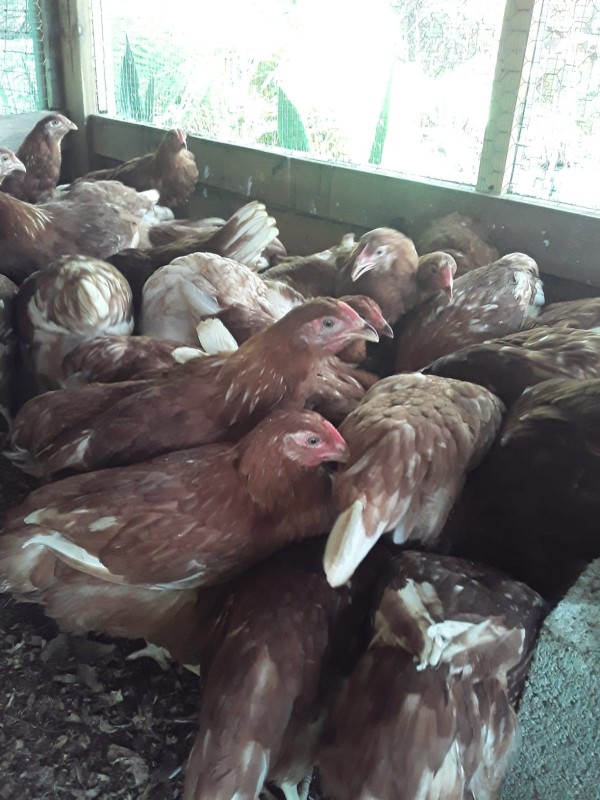BAMSI EXPANDS ITS POULTRY DIVISION
BAMSI STUDENTS TO BENEFIT FROM EXPANDED ANIMAL SCIENCE PROGRAM
LOCALLY GROWN PROTEIN TO BE ADDED TO BAMSI STUDENT MENU
Nassau, Bahamas, August 8, 2021: STUDENTS of The Bahamas Agriculture & Marine Science Institute (BAMSI) will have a special item added to the school’s menu this Fall – eggs produced by chickens grown at BAMSI. Dr. Raveenia Roberts-Hanna, Executive Director of the Institute with oversight of the academic portfolio, said the newest addition to the farm’s animal division will allow for an expansion of the syllabus and further enhance student knowledge and training in poultry science, as well bring a nutritious and tasty twist to the school’s cafeteria offerings. In May, BAMSI received 115 ISA Brown chicks from the Ministry of Agriculture and Marine Resource’s Layer Programme. ISA Brown chicks are the commercial variation of the Rhode Island Red and produce a brown shell egg.
“The addition of the layers will support the diversification of BAMSI’s syllabus and training,” Dr. Hanna noted. “We currently teach animal science and production, so it’s now good to have all animals on the farm to support the practicals and hands on training.”
The eggs will also be incorporated into the student meal plan for healthier and more economical meals. “They won’t have to purchase eggs for the cafeteria, plus the eggs provide students with an important niche for education, research and training,” she added.
According to Dr. Hanna, the eggs laid by the chicks will provide a sustainable supply of free-range organic eggs and allow students to witness the full growth cycle from chick to mature layer to egg production and also stay in line with a clear objective of the school, ‘we eat what we grow’. Where there is an excess of eggs, she noted, they will be sold in the community.
The project at BAMSI evolved from the Ministry of Agriculture and Marine Resources distribution of egg producing poultry throughout the Bahamas. Assistant Director Andrew Pinder said, “One of the reasons we selected table eggs is because we wanted to expand a protein source that can be sustained. The Ministry is looking at bringing in roosters so you can incubate eggs and complete the cycle, some farmers are already doing that – breeding eggs and hatching out those eggs. So, we hope that BAMSI will familiarize students with that process, purchase an incubator, breed hens and be a supplier of chicks to farmers in Andros and other islands. We want to see it get to the point where it is sustainable and see the full cycle, so we are also looking at bringing in hatchable eggs, and putting them in a hatchery.
The Ministry’s role in the Layer programme, Mr. Pinder noted, is to facilitate the distribution of baby chicks (layers) to persons who are currently in table egg production, as well as persons interested in getting involved. The Ministry provides, at no cost to the participant, chicks, feed for birds up to 26-weeks of age, bedding, vitamins and electrolytes. A number of schools, including BAMSI, are currently participating in the programme and have also received feeders and special water jugs. The Ministry also provided technical assistance. Among those targeted for the programme were farmers, backyard gardeners and schools. The Ministry sought to expose students in general, and those on the Family Islands and in rural communities to layer production.
The Ministry sought to expose students in general, and those on the Family Islands and in rural communities to layer production. Lennie McDonald, BAMSI’s Farm Administrator has been busy preparing for the arrival of the chicks.
“A 60 x 20 chicken house has been constructed, and we are in the process of building some laying trays and getting ready to install the water bins for them to drink water – the free-flowing system will use five-gallon water bottles. We have also purchased four feeder boxes. “We had a lot of materials on hand, but we got a few more things to protect them from the rain, including a plastic ground covering that is used in the aquaponics centre.
According to Mr. McDonald, the chicks will likely only use about a quarter of the large building at first, before an increase in numbers fills out the space. He also noted that while some feed came with the birds, BAMSI has already sourced more feed to supplement and support the chicks as they grow.
“We are on our way. By the end of the week, they can be moved from present holding location to the actual house we constructed which is near the aquaponics centre, which makes it easy to access and operate because they will need to be provided with lights and a permanent water source,” Mr. McDonald said.
“We’re excited to move into poultry production and to see how we can produce these chicken eggs. Going forward, this is going to be something bigger for BAMSI.”










